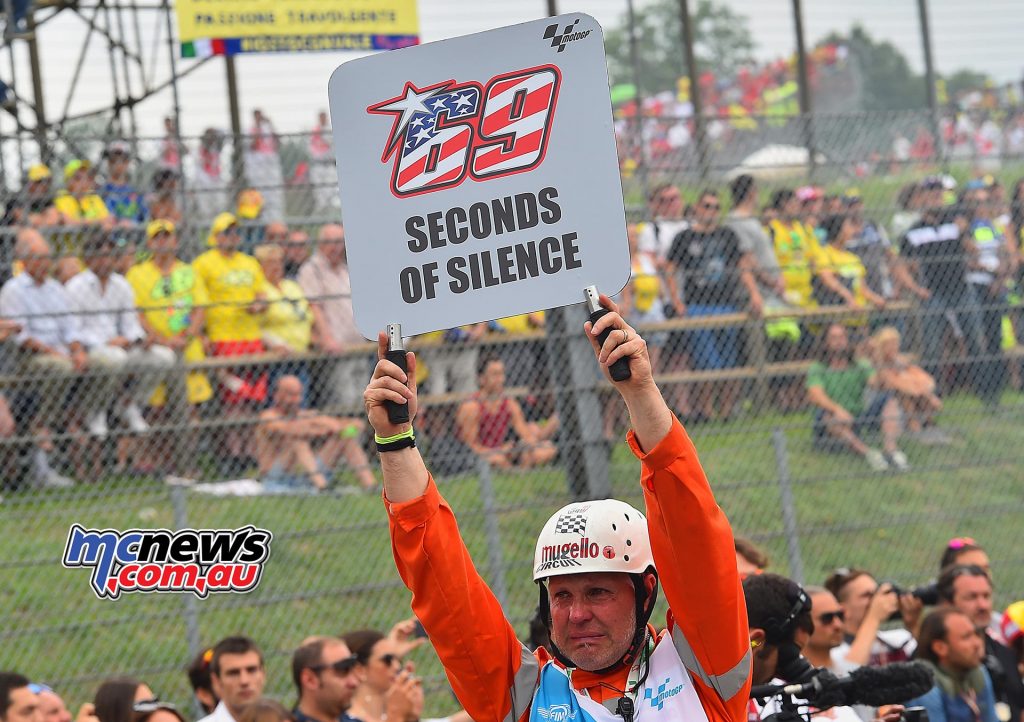Nicky Hayden, Tamburini, Castiglioni, Dr. T and the 916
A Reflection on Life with Kari Young
Sometimes we compartmentalise a chapter of our lives into the recesses of our minds. But life has a way of pushing it back up. The end of May has never been a good time for me. It’s when I was first hit with loss – losing my anchor, my mother. Each year I dread that time of year, the anniversary of her passing.
But this year, two other losses two consecutive days later, shook me out of my own lane. The day after my mom’s anniversary, on my computer was news about Nicky Hayden’s passing. I didn’t read it or connect like I would’ve years ago when motorcycles were a chapter of my life.
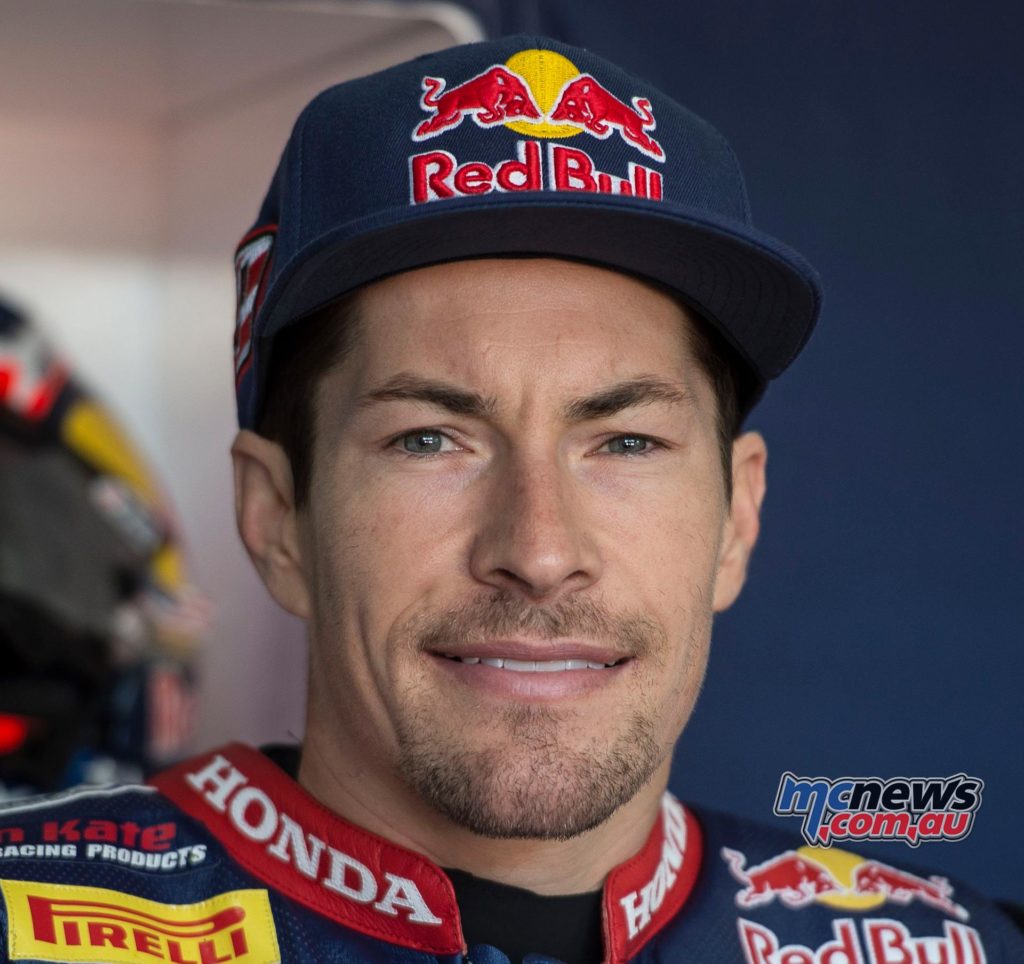
The next day, another article in that same place about NASCAR racers paying tribute to Nicky caught my eye. That same day, an elderly friend’s unexpected passing shook me. She had a good long life, but the regret was I never got to say how I loved our visits, how she reminded me of my grandma, and how she encouraged me each time I made baked goods, “Oh, this is your best one!” Three days in a row, these three anniversaries will now be too easy to remember in May.
I read the article of NASCAR tributes and it became obvious how well known and received Nicky Hayden became since I met him when he was 17, the day I spent on their Kentucky farm. Motorcycle racing had never been a main sport in the U.S., but it was obvious how Nicky had become well loved around the world.
Life can sometimes take a left turn, and that catalyst can become one of life’s wonderful surprises. That’s what happened after the universe took away my anchor. I liked a guy and his bike was the only way I got to spend with him, he was an intern when my mom was in hospital. He gave me a ride on his teal BMW K1100 to a biker hangout so I could write an article. Seeing him at the hospital helped pass the time there.
We swapped dinner plates at the hospital – I couldn’t eat, he ate my portion of Chinese takeout so as not to waste food. He was the last friend my mom met. The last thing she wrote to me was his name and pager number on a Post-It, which I still have somewhere.
That one BMW motorcycle ride turned into one of the greatest adventures of my life. For a brief moment, it brought a bit of light in the darkness. It took the focus off my own unshakeable loss and made me focus on two wheels, its people, and experiencing the most graceful sport in the world – one without the safety of a cage, and reliant on the laws of physics. Though that chapter is behind me, to this day, I can’t help but recognize the familiar sound of a Ducati V-twin coming down the street.
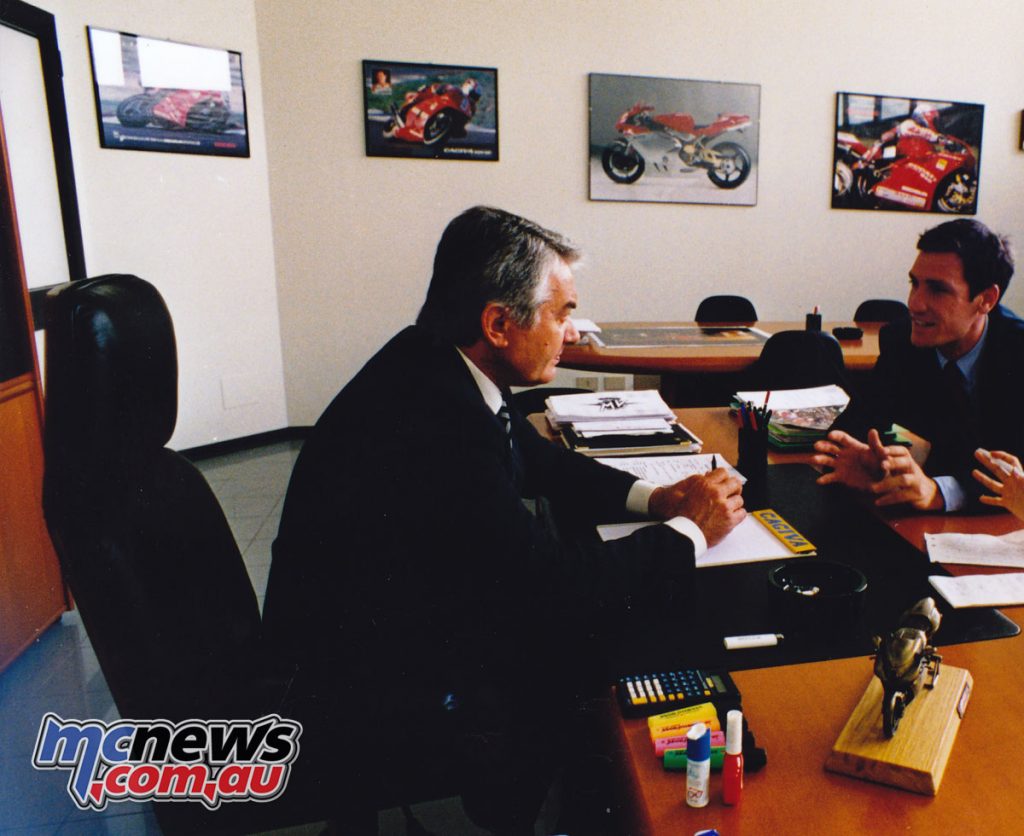
My articles got translated and published in magazines in places I had never been to, in Europe and Australia. That ride started me on a journey to locations I had not heard of, nor thought to go to – including Owensboro and Rimini. So when I did finally read about Nicky and the Rimini connection – it all came back. That chapter I compartmentalised so well, in the same way I used to observe motorcycle racers did to deal with risks.
To celebrate the first day of the new year with my new friends in the industry then, to the medical intern’s delight, we talked shop for five and half hours at the Ear Inn. He remarked, “I take her on one ride and the next thing you know, she’s talking to the CEO of Ducati!” A company I hadn’t heard of until that ride.
I’d only taken an intensive MSF course, and all I brought to the table was journalism and the human element. What I always carried with me were the people I met, who’d embraced me into their two-wheeled world. Sure, some were big names, but we made a human connection and spoke about life more than bikes.
In Italy, I was among a crowd of moto journos that Massimo Bordi quieted, so I could speak to Dr. Taglioni briefly when he was ushered around what was the new Ducati museum. But what Dr. T. said to me in that brief moment we had wasn’t about his desmodromic valve actuation system, instead I recall him giving an invite to his garden, or to see the orchids in his garden. While my memory is fuzzy, it was definitely about plants and not engines.
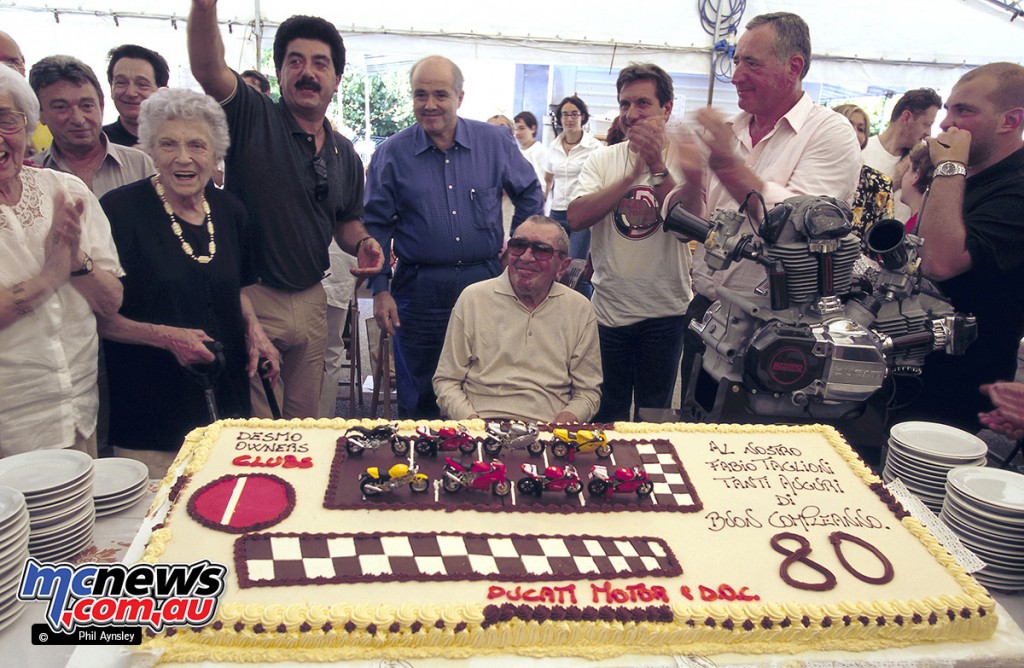
Doing research for this, I found out about the passing of another motorcycle legend that was part of that chapter – Massimo Tamburini, who I interviewed in what was a schlep to get to – the CRC. Besides talking about bikes, this dapper gentleman spoke about redoing his kitchen, from what I vaguely recall, and the enjoyment of cooking or food, and that one day I would be invited – at least that’s what I thought the interpreter said in broken English.
Later that day, I did go to the home of Claudio Castiglioni for dinner with his wife. While there was the famous Cagiva winning bike on a granite slab in their living room, dinner talk was less about bikes and more about our lives and his pride for his son. The dinner was a kind gesture, especially because I was homesick, although a kiss or two on my lips when I left that night was a bit too kind, but perhaps that’s what they did in Italy, I figured.
A few years ago, I was surprised when I saw a New York Times piece about Castiglioni’s passing, which was also a top news story. So many gone from what was such a short chapter in my life – a stark reminder at how short the arc of life really is. Whether one is 35 or 80 years old, it all feels too short. The two Italians I met in that glorious little chapter of my life, inextricably linked to the 916 and later the MV Agusta F4 – both now gone so quickly it seemed.
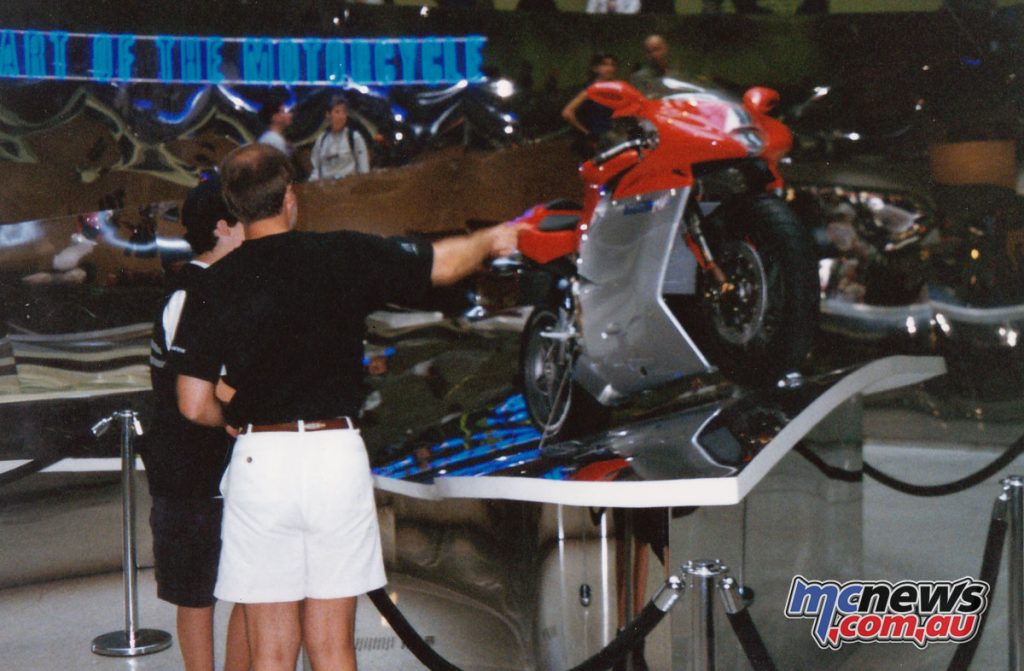
It jogged my memory of the Guggenheim Museum’s Art of the Motorcycle exhibit – their creation, the MV Agusta F4 the centerpiece of it, and an interview I did with Frank Gehry.
We get few magical sparkly moments in life and the time around that exhibit was one of those moments for me. I had just come back from Italy, having asked someone at Ducati if they had a replica 916 or something to give the medical intern, and the PR person gave me one from inside his desk to bring back.
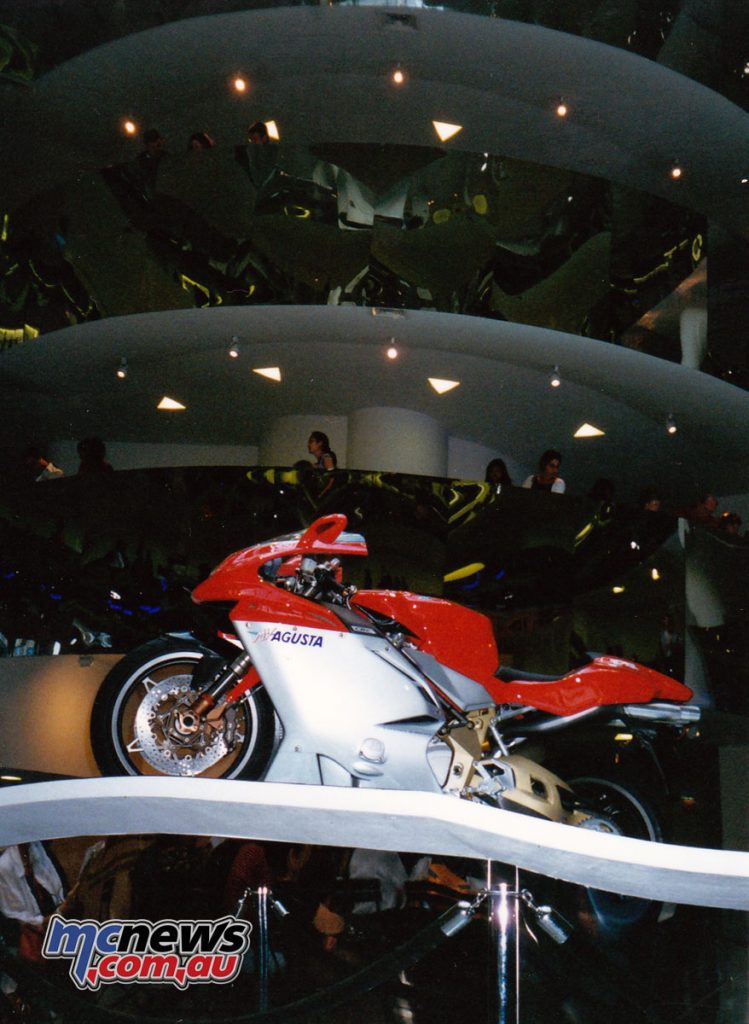
I had one proper date with the intern – we went to the Guggenheim exhibit and then at dinner, I gave him the gift, which fell apart in a shoebox I tried to stuff it in to save luggage space. He immediately recognized the yellow bike, “Oh my God, a 748!” And knew exactly how to snap the pieces back together.
For the exhibit, BMW put up journos that included my new friend Kevin Ash, whom I’d just met at that first World Ducati Weekend. He let me check out the luxurious digs they put him up at, and to get there, I was given a quick lift from the museum to the hotel in a BMW 7 series with BMW designer David Robb. I had always heard about Four Seasons’ beds and linen count, and Kevin left me alone to enjoy the room and call a friend for a few minutes, making a dry joke as he closed the door.
I relied on moto journos at the time – they were my Google then, especially Kevin, whose surprise passing a few years ago was particularly rough when I heard about it. He was the kind soul I wanted to sit next to at the meals Ducati provided covering that World Ducati Weekend, in a landscape of large egos. He talked about how important the Ducati 916 was in the bike world at those lunches.
Later back home, I had late night chats from the U.S. to him, as well as his wife, in the morning U.K. time. He and I continued to talk shop about my favorite topic – Ducati, Tamburini, Castiglioni and Massimo Bordi. While the shop talk made me feel alive, really it was the friendship, the communing on a basic human level, and bikes were the reason to connect and kibbitz. If it weren’t for Ducatis as the catalyst, I never would’ve met Kevin, Tamburini, Castiglioni and of course Bordi, who is still with us, touch wood.
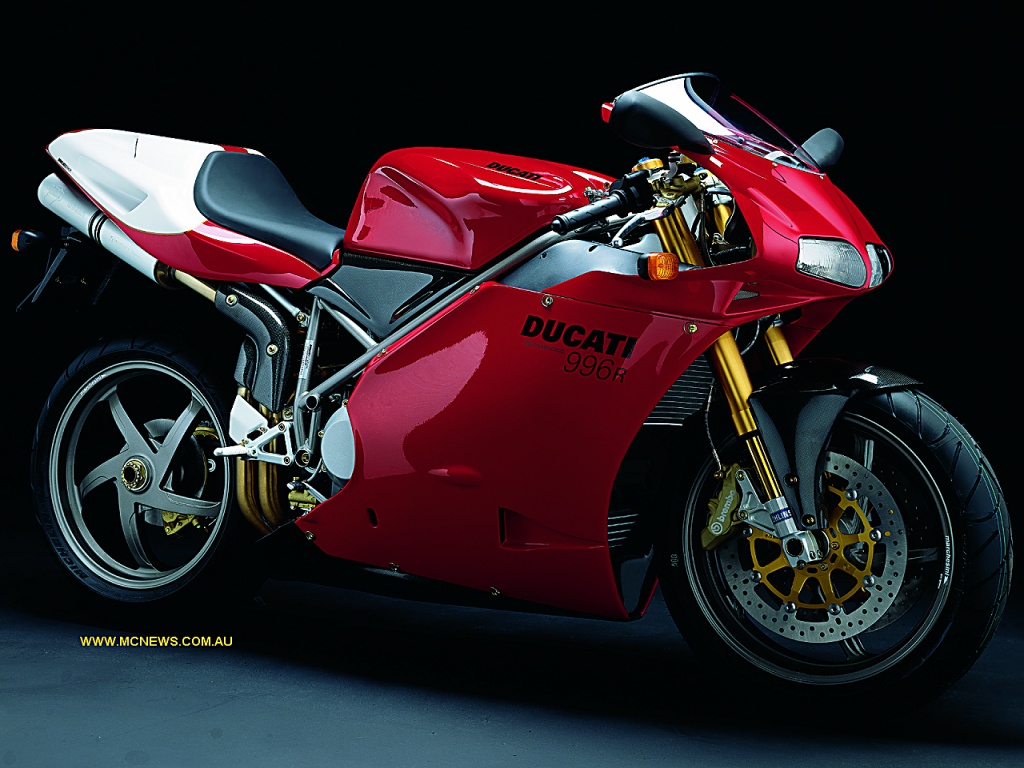
A person’s physical passing is a strange thing. I’ll always equate the 916 to them and while they are gone, the iconic bike is still here as a reminder. We can still feel, ride the bike, and remember them as if they were still here, and we can still feel their spirits most of all.
While that world accepted me, I must’ve shared that I didn’t belong because Tamburini said, “We would like you to stay in this profession,” I wrote in a journal I’d forgotten I kept back then.
I then interviewed the Hayden brothers and flew to Nashville and drove to Owensboro to spend the day with them – then 20, 17 and 15. The scene I’ve always remembered was having dinner with the family, the youngest siblings sat eating at the counter next to us in the dining room/kitchen, while I sat at the table.
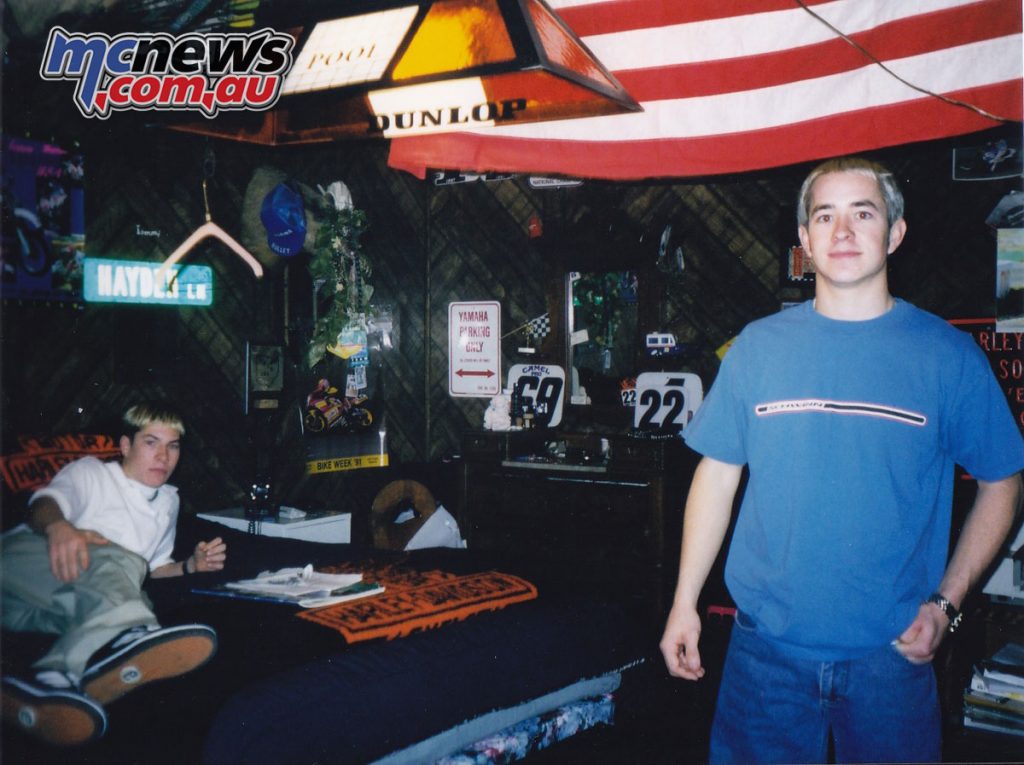
There was a Last Supper picture and we said grace. Being in this town I’d never been to which felt far away from my own surroundings, and having eaten the night before at the diner by the motel, it was gracious of the family to invite me to have a meal with them at the end of my time there. It made me feel a little less like a stranger.
Nicky was my liaison for the trip. I remember asking him on the phone what was the best hotel I should stay at in town. In going through an old bin, Nicky’s HyperCycle Suzuki business card is still at the top of the pack of cards from then, with notes and an email address.
Outside, there were llamas, horses, donkeys, and pigs. Inside, there was an overstuffed area of too many trophies and not enough room. From my perspective, Tommy was the gentle, quiet older brother, while the younger two were more spirited with one another, perhaps a function of sharing a bedroom, from what I recall.
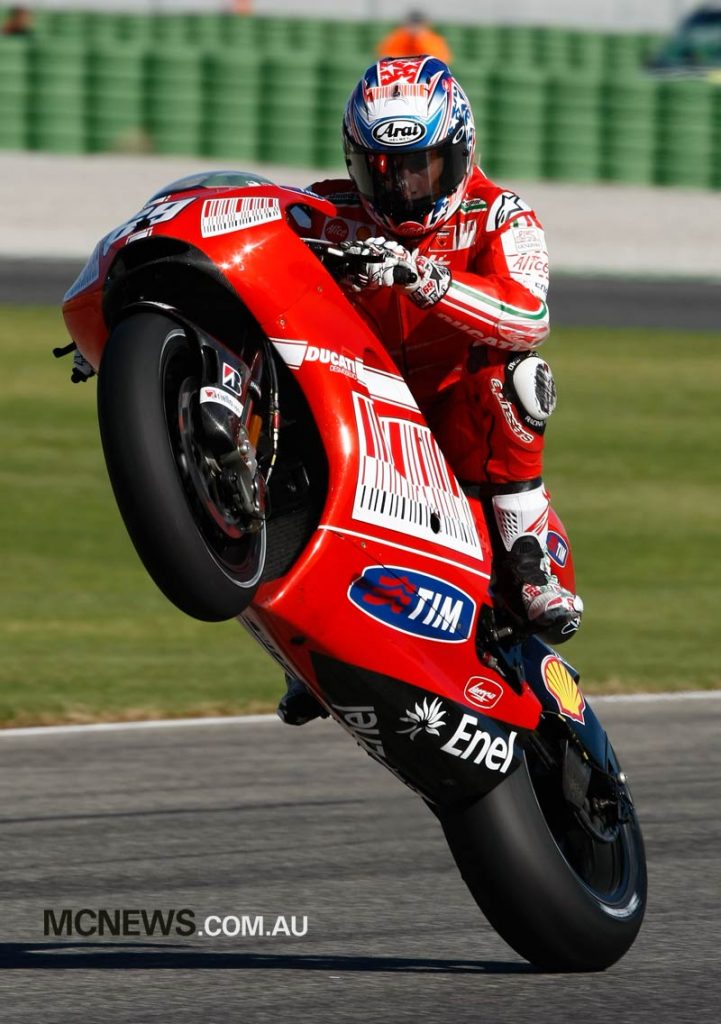
Nicky was the middle child, getting attention then as a “bright young star” as I wrote in the article later. In his first year as a pro, he finished fourth in both the 600cc and 750cc Supersport classes and had signed on with Erion Racing (Honda’s then-satellite team) for 1999, riding in both 600cc and Formula Xtreme classes.
In that old article, I wrote the buzz at the time was on Roger Lee coming up. He was about to turn 16, marking the first time in decades that three brothers would be on the racetrack at the same time.
In the article I wrote that Tommy began on a 50cc dirt bike just before age three and he said he wanted to be a 500cc GP World Champion, a class that had seen a dearth of American talent in recent years… I continued, ‘Nicky started out racing a 50cc bike a little later than Tommy did, at age four, and worked his way up following in Tommy’s footsteps. Like his brother, his goal is the World GP title.’
“I want to ride 500s, if they’re still around,” Nicky confided. “That’s the ultimate. It’s not the money, it’s where I want to ride, what I want to do. I’m just going to try to get through high school. I like some of high school – I like the girls.”
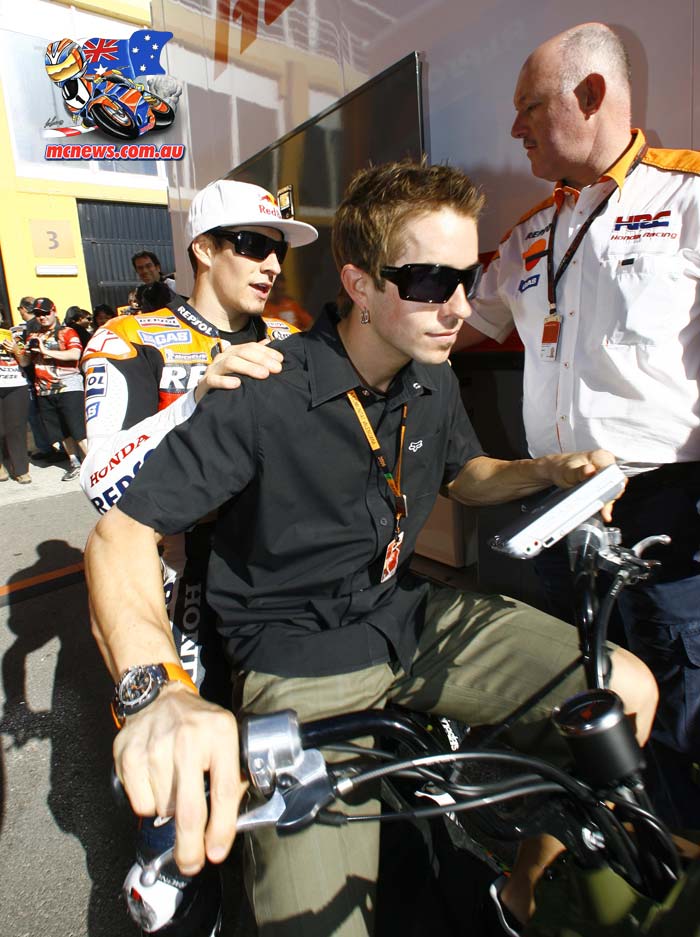
Nicky and Tommy raced against each other in 600 Supersport in 1998, and played down the comparisons of one another, but admitted to enjoying a bit of sibling rivalry. At the time Tommy said, “You might give your little brother a little more room but you still want to beat him. We joked about it going into the last race, about beating each other. Nick was fifth going in and I was sixth. He was only five points ahead of me. I didn’t finish the last race, my bike broke, I would’ve had a chance to beat him.” Nicky added, “We’re pretty close. I don’t like how they compare us.”
Visiting them at the farm, I always recalled the brotherly ribbing between Nicky and Roger Lee, they were still kids after all. When Roger wondered out loud about his racing prospects, I always remember Nicky in a comedic moment, replying, “Look at you!” pointing to Roger’s baby-fat stomach and everyone laughing.
I had CDs of a punk band whose music revolved around motorcycles, flat tracking and had songs dedicated to racers like Agostini. I gave it to Nicky that day, and I recall him taking off on a bike and chanting one of the motorcycle song titles from the CD and circling back to ask me something like, “Do you think I’m famous?” Whatever the exact sentence was to me, his notion was one of wishing to be famous.
It struck me when he passed, that since I met him at his home at 17, he did get to realize and live out his dreams, that he wished out loud that day so many years ago. And his parents got to enjoy the ride of his life by physically seeing all his achievements in a front seat way. Not all of us get that luxury of having our loved ones physically still here to witness the path our lives took.
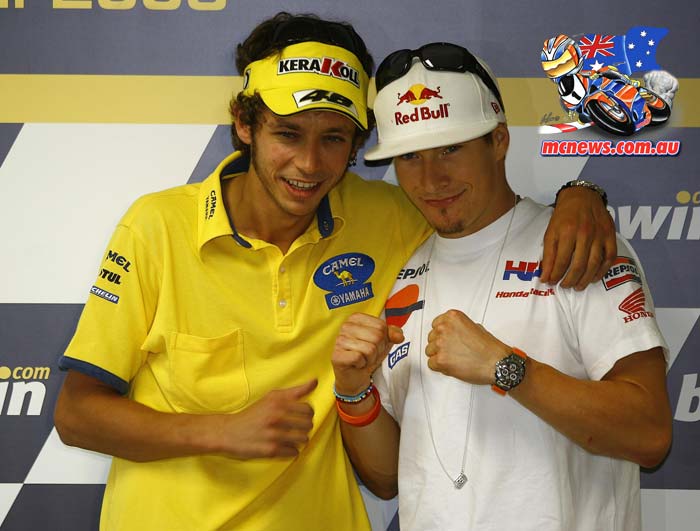
Years later, I heard that Nicky got a show on MTV. In 2006 I saw him race at Laguna Seca, although my overriding memory of the weekend was the stifling heat and almost dying of heatstroke, if not for a ride from a kind soul to the ER just in time. Later that year, I teared up watching Nicky on TV, holding the American flag when he clinched the MotoGP championship.
I’d always felt a distance from the more staid, almost cool, international racers. But Nicky was authentic and it showed when he cried that day winning the title. Not sure that’s a common sight among motorcycle racers who are well-versed at compartmentalising life.
I compartmentalised my own life shortly after that win, placing the motorcycle chapter neatly in a drawer to move on to other paths life had in store – until the news of Nicky’s passing came across my screen. Two days in a row. It made me remember. The loss of a person makes us reflect on the times we had, how they touched our lives.
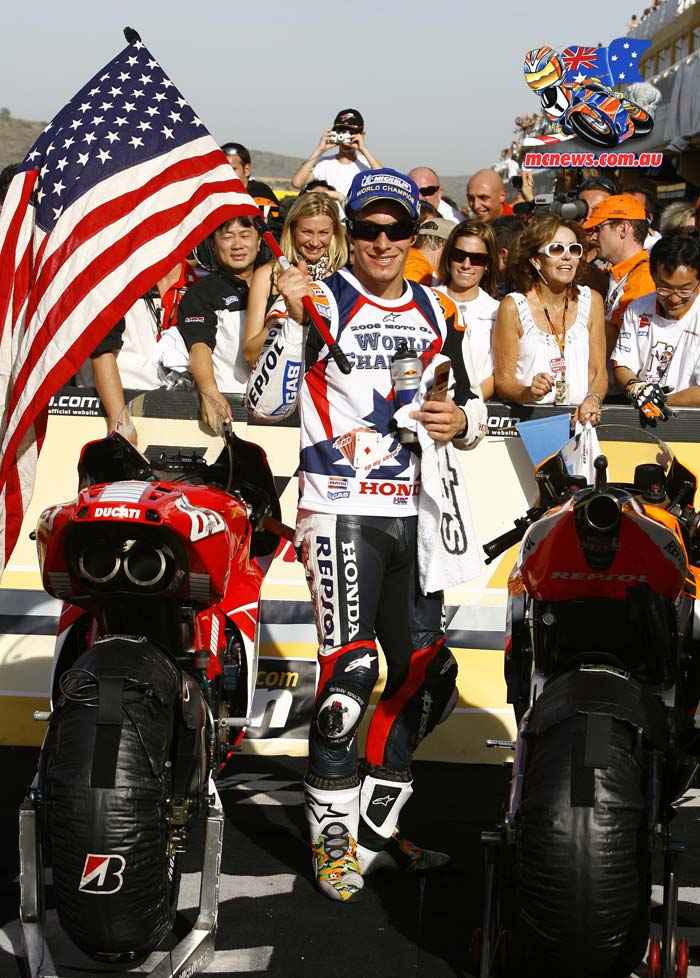
Like many who met a younger Nicky, I was proud of his worldly achievements of a dream – of becoming famous like he’d wished the day I met him, and becoming the champion at the class he hoped to compete in one day.
But the one funny thing I always recited to friends since that day on the farm with the Haydens, was talking about music, I mentioned Sting for some reason and Nicky said, “Who’s Sting?” A reminder to me of a different generation, is what I always chalked that comment up to. And that fame can be a funny thing. One can be huge in one world and not known in another, which I’m sure top motorcycle racers can relate to.
But for all the talk about motorcycles and the Hayden’s racing history, that’s not what I felt from the day I spent with them. Beyond a tight-knit family, which was a given, what I took away was their bond with one another as individuals and the kindness they had for each other and others as individuals.
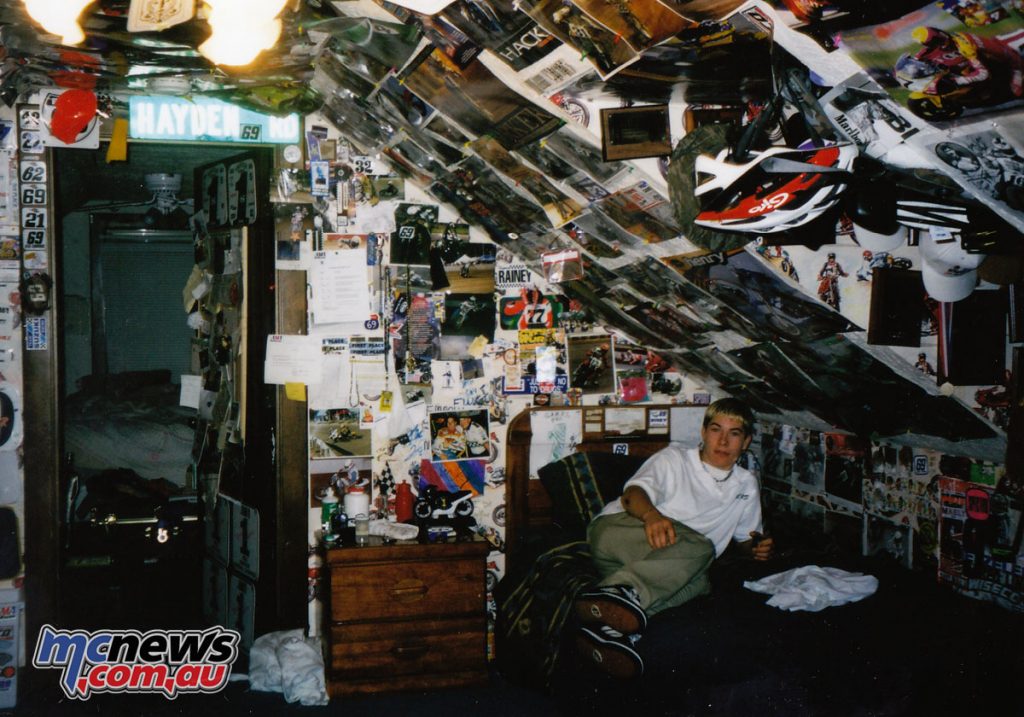
If it weren’t for the motorcycle posters plastered all over Nicky and Roger’s bedroom, the family sport and business could’ve been baseball or soccer. The trophy Roger held to pose for my photo, could’ve easily been for being a jockey, as he noted he’d originally wanted to be.
Motorcycles may have been the family’s chosen business, one that paid the bills to humanly thrive, but beyond that – it was what they used to connect with each other, to share life experiences through and lessons with. It was the catalyst for which their love for one another rotated around.
Upon spending that day with the Haydens, to me, it didn’t feel like motorcycles was the main thing, it was just the tool with which to communicate to one another through, the vehicle that amplified their love, their language of love realized on two wheels.
In that brief but sweet chapter in my life of meeting people I never would’ve ever stumbled across – thanks to my crush on a guy – motorcycles may have been the human topic we focused on and gave us reason to rally around like a campfire, but shed the stats – the mphs, the ccs, the number of units sold – and we’re just left with human beings connecting through these vehicles.
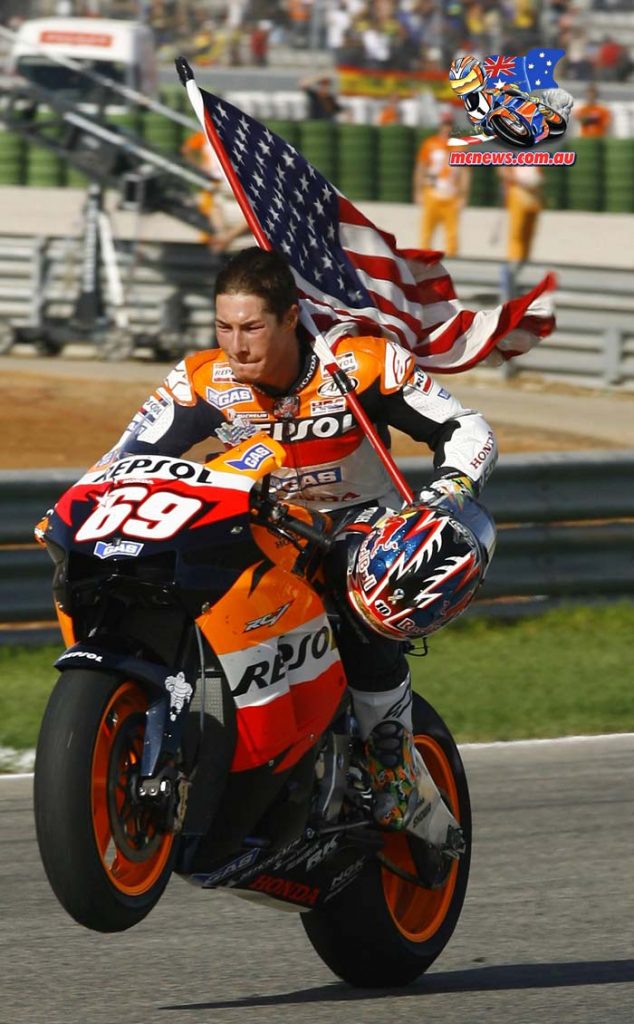
What I saw when I hung out with the Haydens was the joking and laughter that young siblings do, with their admiration for one another obvious that day. The three brothers all had the same hair cut and bleached blonde hair – a visual tie to one another externally.
Back when I spent the day with them, it was a quiet analog world. We were present, some people didn’t email, the phone was still the main way to communicate, forcing one to one personal interactions.
But in this robotic era, where we communicate device to device, rather than one to one human conversations, as I scanned the overwhelming digital tributes about Nicky, it struck me that in all these years since I put that chapter away, he still managed to be present with others and connect on a human level, even with a final joke on Twitter to a fan who must’ve appreciated the gesture from a world champ.
There was one photo I took that day on the farm which was published in the article that I’ve been furiously trying to find. It was the three of them standing by their horse. The horse was nipping at Nicky’s ear, and Nicky, giggling, pulled away. Of all the pictures I took of them that day, it’s the one I can’t find.
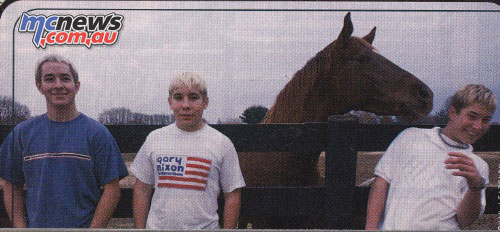
Having to go back in time to search the old article and photos, it made me think about how similar the breakup of a relationship is to the loss of a loved one – sometimes we are just meant to be in each other’s lives for a brief sparkly moment.
I called someone from back then because I couldn’t find the photo I was desperately searching for, hoping he’d find it in his heart to do a mitzvah to take some time to search the copies of photos I shared with him from then. While I never did hear back if he tried to look, in that call, what I heard from the voice on the phone wasn’t the intervening years that had fallen between us, or the human disappointments and shortcomings, but the sound of what was once there that connected us.
Love is often not the romantic variety. It can be, as we’ve seen with Nicky tributes, a greater, simpler love on a human level. Being generous of spirit to a fellow human being is a form of love. But the one thing that doesn’t fade is that feeling.
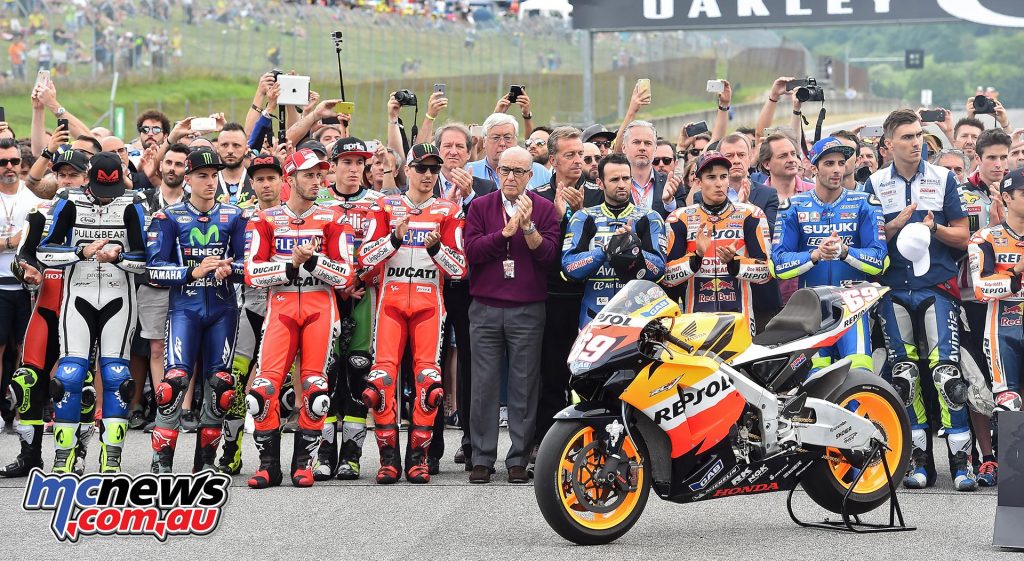
We may no longer physically be together and not meant to be together beyond a certain amount of time. Sometimes a person is meant to be in our lives as a catalyst – to push us to grow beyond where we wouldn’t have gone if not for them, as in the example of Nicky seeing Tommy, whose mere presence inspired him to strive, and yet it made him what he became, it fulfilled his dreams of a world GP title. Or a person’s shortcomings can be an equally powerful catalyst.
Losing someone is also analogous because we can still feel the love of that special soul. The feeling doesn’t fade. And though they’re no longer physically able to be with us, we can still talk to them. But with world’s din (especially in this era), our loved ones might have different ways to talk back to us from where they are now – in the signs – like pennies on the ground, repeating or certain numbers that catch our eye, unusual disconnected calls on landlines or when cell signal is strong, blown light bulbs, or visits in our dreams. They are gone, but always with us.
I was looking for a song that would give me strength, since I was shocked by these other two losses, and found comfort in “Seasons of Love,” from the Broadway show I saw around the time I met Nicky. It had always made me think of my mom’s initial passing, but now it will make me think of Nicky as well each May.
